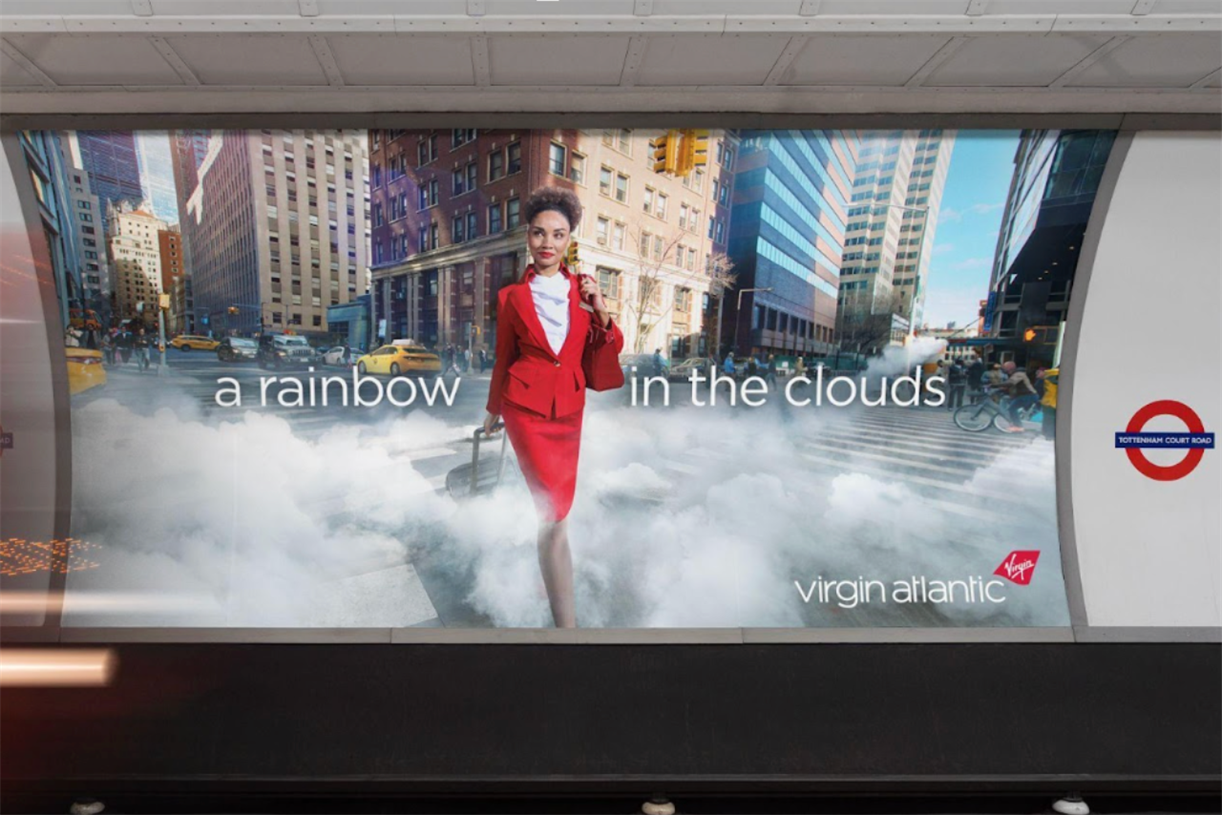Holiday marketing 2022—everything brands need to know
Against a backdrop of economic anxiety and fears of a recession, marketers are pulling out all the stops to entice shoppers this holiday season.

It’s supposed to be the most wonderful time of the year, but in a period fraught with uncertainties—including economic anxiety caused by inflation and recession fears—that remains to be seen. After two years of robust holiday sales, retailers are expected to see more modest gains this year as U.S. consumers watch their wallets and pull back on non-essential purchases.
Last week, the National Retail Federation released its forecast for the period from Nov. 1 to Dec. 31. The organization is predicting that holiday sales will grow between 6% and 8% over the 2021 season to between $942.6 billion and $960.4 billion. The gains come on the heels of a record 2021 in which holiday sales jumped 13.5%.
“Consumers are looking for discounts and deals—for value to stretch their dollars in the face of higher energy prices, higher housing prices,” said Matthew Shay, president and CEO of the NRF. “We think that’s going to continue for the holiday season with bargains,” he added, noting that “lower-income households are feeling the pinch.”
And since many brands have also been tightening their own media budgets amid fears of a potential recession, holiday marketing will need to work even harder than usual to entice consumer spending.
Below, Ad Age breaks down how retailers are marketing and strategizing this holiday season.
Promotional tops emotional messaging
Hold the tissues. So far, this year’s mix of marketing messaging has been all about value and promotions rather than the emotional, tug-at-the-heartstrings messages from holidays of yore. One prime example is Kohl’s, which won acclaim in 2020 for a tear-jerker of a holiday spot showing a blooming friendship between a young girl and her elderly ill neighbor during pandemic lockdowns. The retailer ran a similarly emotional ad last year as well. But this year, Kohl’s pushed a message “More Gifts, More Savings” about value and its Kohl’s Cash coupons as it tried to attract price-conscious customers, according to new Chief Marketing Officer Christie Raymond.
Similarly, Target also veered away from storytelling in favor of an anthem spot that touted the chain’s convenient and quick services for merchandise pickup.
“When you have a more discretionary consumer, to win them there is going to have to be a push into discounting and messaging that really features around specific value propositions and reasons to engage with the retailer at a certain time,” said Bruce Williams, executive VP, head of performance media at Dentsu Media.
But he noted that, as they strive to get shopper dollars early, retailers should be as clear as possible that whatever bargains they are offering now will not be outdone with deeper discounts later in the season. That way, consumers will know they are getting the best deal now. Williams said stores will try to stand out from one another with new messaging around their own sales events. One example of this is Walmart, which aired a holiday spot advertising its Monday sales events this month, far before any Black Friday-type promotions other retailers might be marketing. Amid the “sea of sameness,” “certain retailers can deploy ways to compete with genuine, authentic messaging” around earlier events to stand out, Williams said.
Mixing up the channels
Linear TV is still top-of-mind for most marketers this holiday season, but so is connected TV. In fact, several direct-to-consumer brands are shifting media dollars out of digital channels such as Meta, including both Facebook and Instagram, and into newer channels such as CTV and TikTok, according to Polly Wong, president of Belardi Wong, a marketing agency with roughly 400 DTC clients.
Year-to-date, her clients have spent 23% less compared to last year on Meta, she said. In addition to CTV and and TikTok, retailers are also investing in direct mail.
“Overall as an industry, there’s a shift away from just relying on Meta and Google and having a broader mix,” said Wong, noting that DTC brands built their businesses on such digital platforms but are now diversifying. “There’s now a huge drive for DTC brands to diversify their marketing mix into traditional marketing like print and TV.”
Wong also said that while many of her retail clients are also leaning into influencers this year, it’s not driving meaningful reach yet.
“It's high-quality marketing touch, but we haven’t found yet that it’s truly scalable as a business channel,” she said. “To drive revenue, you’d need 1,000 influencers and there’s really only a small amount that have a good following.”
Retailers will also continue to experiment with social commerce and livestreamed shopping events. After partnering with tech platform Firework last year, grocer Albertsons has been hosting shoppable experiences around cooking.
“There is some test and learn into these new formats, new channels that are beginning to show up,” said Williams, noting that Dentsu is advising clients to test now and get benchmark data and learnings in case they want to invest more heavily next holiday.
Brands are also delving more into physical experiences. Rakuten, which offers shoppers rewards like cash back, is hosting its first in-real-life experience as it tries to build brand awareness this holiday. The company is planning a “Sleigh Your Shopping” pop-up in Manhattan on Nov. 12 and 13 where consumers can get 20% cash back on purchases from brands like Ugg and Eberjey.
Home products take a backseat
After two years of sales surges for home items including furniture, home décor and seasonal décor, experts except the category to decline this year. “If consumers are more reserved in spending, they might not spend as much for seasonal décor,” said Wong.
Already, home improvement retailers have seen sales slip as consumers focus less on outfitting their houses. Experts expect that top selling items this year will be in the apparel, footwear and accessories categories, as well as in electronics. The shift may be exacerbated by consumers’ hesitancy with spending. Larger-ticket items, like a couch, might not make the cut. In addition, consumers are expected to pull back on holiday decorations after spending on the category during the pandemic. There are only so many inflatable yard figurines a family can erect, for example. Earlier this week, Target sent out an email advertising 20% off holiday décor items like outdoor lit décor and artificial trees in an effort to spur spending.
Inventories get a reboot
Last year, the story of the season was the supply chain. Pandemic delays, along with labor shortages and shipping cost increases created a perfect storm for retailers and had them struggling to get products on store shelves in time for the crucial fourth quarter. Fear of scarcity had consumers urgently scrambling to buy items as soon as they could find them, which helped contribute to the record increases in spending. This year, however, the landscape is different. Retail experts say that many of the supply chain issues from 2021 have resolved themselves and most stores have balanced inventories. Yet because of inflation, prices are higher, so consumers with similar budgets to last year will actually end up buying fewer items.
“[Last year], they were spending like crazy, maybe on things that they didn’t need, but this year, people have come back to center a bit,” said Lauren Beitelspacher, associate professor in the marketing division at Babson College. “They still want to celebrate the holidays but there’s not this fear and anxiety of supply chain—rather it’s more of an economic fear that is going to stall spending a bit because things cost more.”
However, even without fear of scarcity, consumers will still shop earlier in the season, as has been the trend in recent years with more spending online, she added.
Check that return policy
One changing area for retailers that may be more noticeable this holiday season is their returns policy. Most retailers have never had the sophisticated infrastructure to easily accept returns and move the inventory back into the selling cycle in a reasonable time frame, said Beitelspacher. But the rise in returns as a result of more online shopping has exacerbated the issue. In addition, stores are seeing more fraudulent returns. Beitelspacher estimated that 20% of online sales are returned, versus just 10% for in-person buys.
“It’s a Catch-22 for retailers,” she said, noting that to encourage shopping, stores must offer robust return policies, but “then there’s a huge cost of sending back the merchandise, which doesn’t get sold back, it just turns into waste.”
To manage the costs, many retailers have been quietly revising their return policies to make the more strict—changing time frames to 30 days from 60 days, for example, and in some cases only offering store credit.
But retailers will not be advertising the changes, so consumers will need to do due diligence and read the fine print when they make purchases. In case of shopper backlash, retailers will need to be transparent and clear with their return policies and make sure they are posted in easy-to-find locations on their websites and in stores, experts say.
Promoting partnerships
Many of the holiday ads already in circulation are promoting retailer partnerships. Kohl’s is advertising its Sephora shop-in-shop, while Macy’s has a dedicated commercial for its Toys ‘R’ Us shops. In addition, several DTC brands are teaming up with each other and with larger brick-and-mortar retailers. Rifle Paper Co., the DTC stationery and wallpaper brand, has had success with West Elm and Summersalt, the bathing suit company, according to Belardi Wong’s Wong. She expects similar collaborations to proliferate this holiday season.
“These partnerships that give your brand extensions and reach to another target audience are very successful,” she said.

 Hollif
Hollif 






























